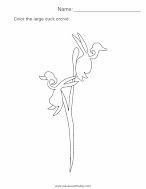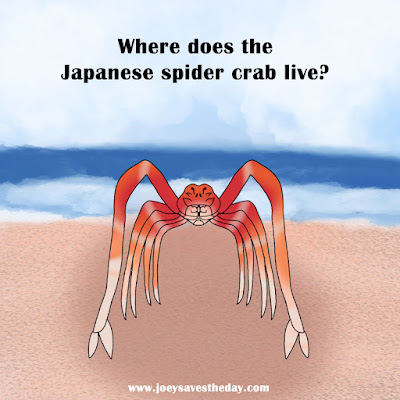Large Duck Orchid
Have you ever heard about the large duck orchid? It is a perennial
plant. The giant duck orchid is a type of small orchid that can be found
growing in parts of Australia. It really looks like a cute little flying duck!
How cool is that? You definitely have to see it to believe it.
What is your favorite type of orchid?
With your parent/caretaker’s permission, you can click on the
link below to see some pictures of large duck orchids:
CLICK HERE
Quick facts about large duck orchids:
1. The scientific name for the large duck orchid is Caleana
primary. It is also known as the flying duck orchid.
2. The large duck orchid stem that holds the flower/s can
grow up to 20 inches tall. One stem can hold up to five orchids. The flower
that looks like the cute flying duck can grow to about an inch. They are
exquisite and tiny orchids.
3. The large duck orchid blooms between September to January.
4. There are over 26,000 species of orchids, and one of them is the large duck orchid.
5. Places the large duck orchids can be found growing are:
- New Zealand
- Australia
- Tasmania
- Victoria
6. Large duck orchids can only survive up to two years without the fungus they need to help them grow, and that fungus can only be
found in the soils where the orchids grow naturally.
7. The large duck orchid was featured on an Australian
postage stamp in 1986.
Share a fact about large duck orchids with us?
Get your free printable large duck orchid coloring sheet
here:
Click the link below to print out your free worksheet
Large duck orchid
Visit my printables section for a wide selection of
worksheets and coloring sheets!
Books about orchids:
1. A Cultural History Orchid by Jim Endersby
2. Extraordinary Orchids by Sandra Knapp
3. Leland and the Sad Little Orchid by Laura Perry
4. Orchids of the World coloring book by Virginie F. Elbert
Parents/caretakers, be sure books are child-friendly before
reading them to your child/children.
Short story alert:
Once upon a time, there was a baby duck named Quacker. Quacker loved searching for new things to see. One day, while Quacker was wandering around, he saw what he thought was a lot of baby ducks. He stopped and watched in amazement at all the cute little baby ducks like him. He started quacking loudly at them, but they didn’t move or quack back. Quacker just kept sitting there, staring at them and trying to get them to quack back at him. He sat there for almost 30 minutes, watching them swaying in the wind delicately. They did not make a noise. They just swayed back and forth. Quacker didn’t understand why they didn’t want to play with him. He tried quacking at them again, and his mom came over to see what he was quacking about. His mom told him that they were not baby ducks like him. She told him they were beautiful flowers that looked like cute flying ducks, but they were not real ducks. Quacker was impressed with what he had learned. Quacker said, thanks, Mom, and went on his way, exploring for more amazing things to see. THE END!
Thank you for reading my post!! “The more that
you read, the more things you will know. The more that you learn, the more
places you’ll go.” -Dr. Seuss
Follow me on Instagram:
https://www.instagram.com/mimijoey444/
Like and follow my author page:
https://www.facebook.com/Mimi-Jones-114739544135886
Books I have written:
http://www.joeysavestheday.com/p/blog-page_16.html
Feature your book here:
http://www.joeysavestheday.com/p/book-of-day.html
Mimi is the author of the "JOEY SAVES THE DAY!" book series and other titles. She loves learning, reading, drawing, and writing. As a homeschooling mother of two children, she has two adult children who have already left the nest. Her 16-year-old daughter, both beautiful and brilliant, has illustrated the books and will continue to illustrate the rest of the series. Her daughter started illustrating the series at 14 and is learning as she goes. Her daughter's dream is to one day become a famous illustrator and fantasy book writer. Let's help Mimi make her daughter's dreams a reality!
Children and adults everywhere will love these books. The stories and illustrations within the pages of the books will put a big smile on your face. The books will spark your child’s imagination, and they will be delighted as you read them. The illustrations are adorable, and the stories are super cute. Plus, books are a great source of learning and an easy way to teach your child how to read. You don’t want to miss out on the opportunity to own this collection of adorable books! All fourteen of Mimi’s books are available on Amazon and in most other places where books are sold.
















